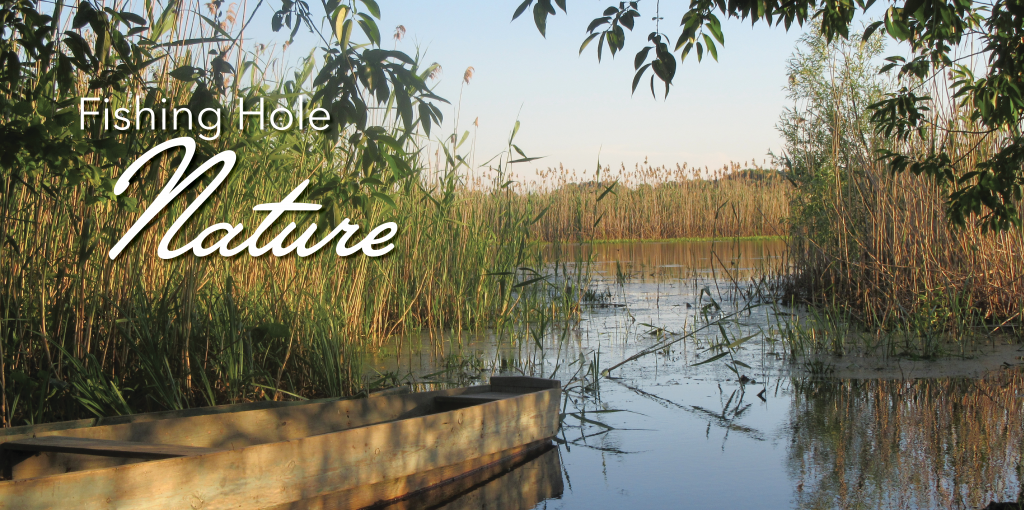One of the most splendid and fierce birds around our local waterways is the Great Blue Heron. Their size and coloring give them their name. Great Blues can grow to an enormous height of 4-1/2 feet tall with a wingspan up to 6-1/2 feet, but a weight of only 4 to 7 lbs. Their coloring is black, white, and grey with hints of blue. During springtime they have a shaggy look with long plumes down their shoulders, fronts, and behind their heads. In flight the Great Blue is recognized by long trailing legs, a tucked S-shaped aerodynamic neck, and slow graceful beating wings. And if a Great Blue is surprised, it flies off making a ferocious growling honk!
In East Texas the Heron rookeries are usually high in tall pine trees, but never far from the water. Their nests are made of loose sticks and twigs, and are about 3 feet in diameter. Females lay around 3 to 6 light blue eggs in a clutch, and generally produce only one springtime clutch each year. Both parents take turns incubating the eggs and feeding the young, requiring almost 2 months of hard work before the nestlings can fly.
The Great Blue Heron is a true carnivore and can hunt prey day or night due to special photoreceptors in its eyes. Fresh fish are their preference, but they have been known to eat rodents, crabs, and even baby alligators! These birds are found near most bodies of fresh or salt water, and occasionally in roadside ditches. Great Blues have even been known to raid backyard goldfish ponds! They are long-legged waders and can stand like statues, waiting patiently to snatch small fish hiding around their tall legs. Or from the side banks a Great Blue will swoop down, grab a much larger fish, carry it to land, and stab it to death with its dagger beak. Once the fish stops wiggling there is less chance of choking on it, but a bird occasionally does die by choking on too large a fish! Therefore, these birds always eat fish headfirst to prevent having them get stuck in their throats. Make no mistake, these birds are relentless stone-cold predators!
Learn more about the incredible nature in our area by joining a chapter of the Texas Master Naturalist organization. To find a chapter close to you, or to read about the state program, go online to www.txmn.org. Volunteer and get involved!
PHOTOS
- The Great Blue Heron. 4-1/2 feet tall with a wingspan of 6-1/2 feet, but a weight of only 4 to 7 lbs!
- Herons are long-legged waders that slowly stalk smaller prey in shallow water.
- Look at those gams!! Drying and cooling off.
- During breeding season in springtime, their long plumes create a shaggy look.
- Great Blues constantly need to repair their loosely made stick nests.
- Herons bring bigger catches to shore and stab them to death. This makes fish easier to swallow, but Herons have been known to choke to death on a large catch!
